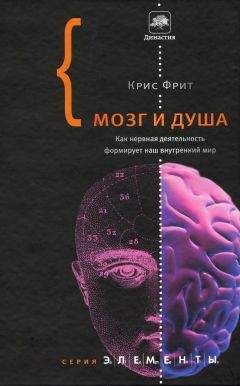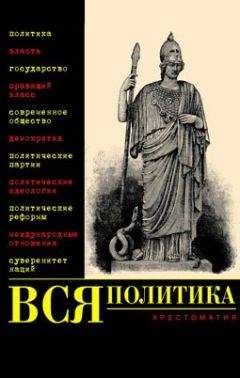phenomenon, we marvel at the surprising exactness with which
the latter turns out to be subjected to its own regular laws. With
regard to individuals, there is always a greater scope of some
individualism and environmental influences. In statistical
analyses these variable factors disappear and the essential con-
stant characteristics surface. The entirety is thus clearly subject
to causative determination. This explains the relative ease of
transition from studying causation to predicting future changes
in the phenomenon. In time, the adequacy of collected knowl-
edge has been confirmed by the accuracy of these predictions.
Let us now take individual cases into consideration. For in-
stance: we meet two people whose behavior makes us suspect
they are psychopaths, but their attitudes to the pathocratic sys-
tem are quite different; the first is affirmative, the second pain-
fully critical. Studies on the basis of tests detecting brain tissue
damage will indicate such pathology in the second person, but
not in the first; in the second case we are dealing with behavior
which may be strongly reminiscent of psychopathy, but the
substratum is different.
If a carrier of an essential psychopathy gene was a member
of the decidedly anti-communist government party before the
war, he will be treated as an “ideological enemy” during the
pathocracy’s formative period. However, he soon appears to
find a modus vivendi with the new authorities and enjoys a
certain amount of tolerance. The moment when he becomes
transformed into an adherent of the new “ideology” and finds
the way back to the ruling party is only a matter of time and
circumstance.
If the family of a typical zealous pathocrat produces a son
who does not inherit the appropriate gene, thanks to a happy
genetic coincidence, (or he was born from a bio-
psychologically normal partner), such a son will be raised in
the corresponding youth organization, faithful to the ideology
and the party, which he joins early. By mature manhood, how-
ever, he will begin to list toward the society of normal people.
The opposition, that world which feels and thinks normally,
becomes ever closer to him; therein he finds himself and a set
228
PATHOCRACY
of values unknown – yet familiar - to him. A conflict eventu-
ally arises between himself and his family, party, and environ-
ment, under conditions which may be more or less dramatic.
This starts out with critical statements and the writing of rather
naive appeals requesting changes in the party, in the direction
of healthy common sense, of course. Such people then finally
begin to do battle on society’s side, enduring sacrifices and
suffering. Others decide to abandon their native country and
wander foreign lands, lonely among people who cannot under-
stand them or the problems under which they were raised.
With regard to the phenomenon as whole, one can predict
its primary properties and processes of change and estimate the
time at which they will occur. Regardless of its genesis, no
pathocratic activation of the population of a country affected by
this phenomenon can exceed the above discussed boundaries
set by biological factors.
The phenomenon will develop according to the patterns we
have already described, gnawing ever deeper into the country’s
social fabric. The resulting pathocratic monoparty will bifur-
cate from the very outset: one wing is consistently pathological
and earns nicknames such as “doctrinarian”, “hard-headed”,
“beton”, etc. The second is considered more liberal, and in fact
this is where the reverberation of the original ideology remains
alive for the longest. The representatives of this second wing
try as hard as their shrinking powers permit to bend this strange
reality into a direction more amenable to human reason, and
they do not lose complete touch with society’s links. The first
internal crisis of weakness occurs some ten years after such a
system has emerged; as a result, the society of normal people
gains a bit more freedom. During this time frame, skillful out-
side action can already count on internal cooperation.
Pathocracy corrodes the entire social organism, wasting its
skills and power.
The effects of the more ideational wing of the party and its
enlivening influence upon the workings of the entire country
gradually weaken. Typical pathocrats take over all the manage-
rial functions in a totally destroyed structure of a nation. Such a
state must be short-term, since no ideology can vivify it. The
time comes when the common masses of people want to live
POLITICAL PONEROLOGY
229
like human beings again and the system can no longer resist.
There will be no great counter-revolution; a more or less
stormy process of regeneration will instead ensue.
Pathocracy is even less of a socioeconomic system than a
social structure or political system. It is a macrosocial disease
process affecting entire nations and running the course of its
characteristic pathodynamic properties. The phenomenon
changes too quickly in time for us to be able to comprehend it
in categories which would imply a certain stability, not ruling
out the evolutionary processes to which social systems are
subject. Any way of comprehending the phenomenon by im-
puting certain enduring properties to it thus quickly causes us
to lose sight of its current contents. The dynamics of transfor-
mation in time is part of the nature of the phenomenon; we
cannot possibly achieve comprehension from outside its pa-
rameters.
As long as we keep using methods of comprehending this
pathological phenomenon, which apply certain political doc-
trines whose contents are heterogeneous with regard to its true
nature, we will not be able to identify the causes and properties
of the disease. A prepared ideology will be able to cloak the
essential qualities from the minds of scientists, politicians, and
common people. In such a state of affairs, we will never elabo-
rate any causatively active methods which could stifle the phe-
nomenon’s pathological self-reproduction or its expansionist
external influences. Ignota nulla curatio morbi!
However, once we understand a disease’s etiological factors
and their activities as well as the pathodynamics of its changes,
we find that the search for a curative method generally be-
comes much easier. Something similar applies with regard to
the macrosocial pathological phenomenon discussed above.
CHAPTER VI
NORMAL PEOPLE
UNDER PATHOCRATIC RULE
As adduced above, the anomaly distinguished as essential
psychopathy inspires the overall phenomenon in a well-
developed pathocracy and betrays biological analogies to the
well known phenomenon called Daltonism, color-blindness or
near-blindness as regard to red and green. For the purpose of an
intellectual exercise, let us thus imagine that Daltonists have
managed to take over power in some country and have forbid-
den the citizens from distinguishing these colors, thus eliminat-
ing the distinction between green (unripe) and ripe tomatoes.
Special vegetable patch inspectors armed with pistols and pick-
ets would patrol the areas to make sure the citizens were not
selecting only ripe tomatoes to pick, which would indicate that
they were distinguishing between red and green. Such inspec-
tors could not, of course, be totally color-blind themselves
(otherwise they could not exercise this extremely important
function), They could not suffer more than near-blindness as
regards these colors. However, they would have to belong to
the clan of people made nervous by any discussion about col-
ors.
With such authorities around, the citizens might even be
willing to eat a green tomato and affirm quite convincingly that
it was ripe. But once the severe inspectors left for some other
garden far away, there would be the shower of comments it
POLITICAL PONEROLOGY
231
does not behoove me to reproduce in a scientific work. The
citizens would than pick nicely vine-ripened tomatoes, make a
salad with cream, and add a few drops of rum for flavor.
May I suggest that all normal people whom fate has forced
to live under pathocratic rule make the serving of a salad ac-
cording to the above recipe into a symbolic custom. Any guest
recognizing the symbol by its color and aroma will refrain from
making any comments. Such a custom might hasten the rein-
stallation of a normal man’s system.
The pathological authorities are convinced that the appro-
priate pedagogical, indoctrinational, propaganda, and terrorist
means can teach a person with a normal instinctive substratum,
range of feelings, and basic intelligence to think and feel ac-
cording to their own different fashion. This conviction is only
slightly less unrealistic, psychologically speaking, than the
belief that people able to see colors normally can be broken of
this habit.
Actually, normal people cannot get rid of the characteristics
with which the Homo sapiens species was endowed by its
phylogenetic past. Such people will thus never stop feeling and
perceiving psychological and socio-moral phenomena in much
the same way their ancestors had been doing for hundreds of
generations. Any attempt to make a society subjugated to the
above phenomenon “learn” this different experiential manner
imposed by pathological egotism is, in principle, fated for fail-
ure regardless of how many generations it might last. It does,
however, call forth a series of improper psychological results
which may give the pathocrats the appearance of success.
However, it also provokes society to elaborate pinpointed,
well-thought-out self-defense measures based on its cognitive
and creative efforts.
Pathocratic leadership believes that it can achieve a state
wherein those “other” people’s minds become dependent by
means of the effects of their personality, perfidious pedagogical
means, the means of mass-disinformation, and psychological
terror; such faith has a basic meaning for them. In their concep-
tual world, pathocrats consider it virtually self-evident that the
“others” should accept their obvious, realistic, and simple way
of apprehending reality. For some mysterious reason, though,
232
NORMAL PEOPLE UNDER PATHOCRATIC RULE
the “others” wriggle out, slither away, and tell each other jokes
about pathocrats. Someone must be responsible for this: pre-
revolutionary oldsters, or some radio stations abroad. It thus
becomes necessary to improve the methodology of action, find
better “soul engineers” with a certain literary talent, and isolate
society from improper literature and any foreign influence.
Those experiences and intuitions whispering that this is a Sisy-
phean labor must be repressed from the field of consciousness
of the pathocrat.
The conflict is thus dramatic for both sides. The first feels
insulted in its humanity, rendered obtuse, and forced to think in
a manner contrary to healthy common sense. The other stifles
the premonition that if this goal cannot be reached, sooner or
later things will revert to normal man’s rule, including their
vengeful lack of understanding of the pathocrats’ personalities.
So if it does not work, it is best not to think about the future,
just prolong the status quo by means of the above-mentioned
efforts. Toward the end of this book, it will behoove us to con-
sider the possibilities for untying this Gordian knot.
However, such a pedagogical system, rife with pathological
egotisation and limitations, produces serious negative results,
especially in those generations unfamiliar with any other condi-
tions of life. Personality development is impoverished, particu-
larly regarding the more subtle values widely accepted in socie-
ties. We observe the characteristic lack of respect for one’s
own organism and the voice of nature and instinct, accompa-
nied by brutalization of feelings and customs, to be explained
away by the excuse of injustice. The tendency to be morally
judgmental in interpreting the behavior of those who caused
one’s suffering sometimes leads to a demonological world
view. At the same time, adaptation and resourcefulness within
these different conditions become the object of cognition.
A person who has been the object of the egotistic behavior
of pathological individuals for a long time becomes saturated
with their characteristic psychological material to such an ex-
tent that we can frequently discern the kind of psychological
anomalies which affected him. The personalities of former
concentration-camp inmates were saturated with generally
psychopathic material ingested from camp commanders and
POLITICAL PONEROLOGY
233
tormentors, creating a phenomenon so widespread that it later
became a primary motive to seek psychotherapy. Becoming
aware of this makes it easier for them to throw off this burden
and re-establish contact with the normal human world. In par-
ticular, being shown appropriate statistical data concerning the
appearance of psychopathy in a given population facilitates
their search for understanding of their nightmare years and a
rebuilding of trust in their fellow man.
This kind of psychotherapy would be extremely useful for




